Formation of Highly Ordered Platinum Nanowire Arrays on Silicon via Laser-Induced Self-Organization
Abstract
1. Introduction
2. Materials and Methods
3. Results and Discussion
4. Conclusions
Supplementary Materials
Author Contributions
Funding
Acknowledgments
Conflicts of Interest
References
- Qazi, U.Y.; Javaid, R. A Review on Metal Nanostructures. ANP 2016, 5, 27–43. [Google Scholar] [CrossRef]
- Yan, R.; Gargas, D.; Yan, P. Nanowire photonics. Nat. Photonics 2009, 3, 569–576. [Google Scholar] [CrossRef]
- Tong, H.; Ouyang, S.; Bi, Y.; Umezawa, N.; Oshikiri, M.; Ye, J. Nano-photocatalytic Materials: Possibilities and Challenges. Adv. Mater. 2012, 24, 229–251. [Google Scholar] [CrossRef] [PubMed]
- Sun, H.; Deng, J.; Qiu, L.; Fang, X.; Peng, H. Recent progress in solar cells based on one-dimensional nanomaterials. Energy Environ. Sci. 2015, 8, 1139–1159. [Google Scholar] [CrossRef]
- Cui, Y.; Duan, X.; Hu, J.; Lieber, C.M. Doping and Electrical Transport in Silicon Nanowires. J. Phys. Chem. B 2000, 104, 5213–5216. [Google Scholar] [CrossRef]
- Min, S.Y.; Kim, T.S.; Kim, B.J.; Cho, H.; Noh, Y.Y.; Yang, H.; Cho, J.H.; Lee, T.W. Large-scale organic nanowire lithography and electronics. Nat. Commun. 2013, 4, 1773. [Google Scholar] [CrossRef] [PubMed]
- Wan, Q.; Dattoli, E.N.; Fung, W.Y.; Guo, W.; Chen, Y.; Pan, X.; Lu, W. High-Performance Transparent Conducting Oxide Nanowires. Nano Lett. 2006, 6, 2909–2915. [Google Scholar] [CrossRef]
- Bell, L.E. Cooling, Heating, Generating Power, and Recovering Waste Heat with Thermoelectric Systems. Science 2008, 321, 1457–1461. [Google Scholar] [CrossRef]
- Dasgupta, N.P.; Sun, J.; Liu, C.; Brittman, S.; Andrews, S.C.; Lim, J.; Gao, H.; Yan, R.; Yang, P. 25th Anniversary Article: Semiconductor Nanowires-Synthesis, Characterization, and Applications. Adv. Mater. 2014, 26, 2137–2184. [Google Scholar] [CrossRef]
- Chan, C.K.; Peng, H.; Liu, G.; McIlwrath, K.; Zhang, X.F.; Huggins, R.A.; Cui, Y. High-Performance lithium battery anodes using silicon nanowires. Nat. Nanotechnol. 2008, 3, 31–35. [Google Scholar] [CrossRef]
- Seisyan, R.P. Nanolithography in microelectronics: A Review. Tech. Phys. 2011, 56, 1061–1073. [Google Scholar] [CrossRef]
- Imboden, M.; Bishop, D. Top-down nanomanufacturing. Phys. Today 2014, 67, 45–50. [Google Scholar] [CrossRef]
- Gnilitskyi, I.; Derrien, T.J.Y.; Levy, Y.; Bulgakova, N.M.; Mocek, T.; Orazi, L. High-speed manufacturing of highly regular femtosecond laser-induced periodic surface structures. Sci. Rep. 2017, 7, 8485. [Google Scholar] [CrossRef] [PubMed]
- Reinhardt, H.M.; Bücker, K.; Hampp, N.A. Directed assembly of gold nanowires on silicon via reorganization and simultaneous fusion of randomly distributed gold nanoparticles. Opt. Express 2015, 23, 11965–11974. [Google Scholar] [CrossRef] [PubMed]
- Birnbaum, M. Semiconductor Surface Damage Produced by Ruby Lasers. J. Appl. Phys. 1965, 36, 3688. [Google Scholar] [CrossRef]
- Young, J.F.; Preston, J.S.; Van Driel, H.M.; Sipe, J.E. Laser-induced periodic surface structure. II. Experiments on Ge, Si, Al, and brass. Phys. Rev. B 1983, 27, 1155–1172. [Google Scholar] [CrossRef]
- Reinhardt, H.; Kim, H.C.; Pietzonka, C.; Kruempelmann, J.; Harbrecht, B.; Roling, B.; Hampp, N. Self-organization of multifunctional surfaces—The fingerprints of light on a complex system. Adv. Mater. 2013, 25, 3313–3318. [Google Scholar] [CrossRef] [PubMed]
- Van Vechten, J.A. Experimental tests for boson condensation and superconductivity in semiconductors during pulsed beam annealing. Solid State Commun. 1981, 39, 1285–1291. [Google Scholar] [CrossRef]
- Keilmann, F.; Bai, Y.H. Periodic surface structures frozen into CO2 laser-melted quartz. Appl. Phys. A 1982, 29, 9–18. [Google Scholar] [CrossRef]
- Nürnberger, P.; Reinhardt, H.M.; Kim, H.C.; Pfeifer, E.; Kroll, M.; Müller, S.; Yang, F.; Hampp, N.A. Orthogonally superimposed laser-induced periodic surface structures (LIPSS) upon nanosecond laser pulse irradiation of SiO2/Si layered systems. Appl. Surf. Sci. 2017, 425, 682–688. [Google Scholar] [CrossRef]
- Reinhardt, H.; Peschke, P.; Riedel, R.; Hampp, N. Mechanically metastable structures generated by single pulse laser-induced periodic surface structures (LIPSS) in the photoresist SU8. Nanotechnology 2018, 29, 305303. [Google Scholar] [CrossRef] [PubMed]
- Rebollar, E.; Pérez, S.; Hernández, J.J.; Martín-Fabiani, L.; Rueda, D.R.; Ezquerra, T.A.; Castillejo, M. Assessment and formation mechanism of laser-induced periodic surface structures on polymer spin-coated films in real and reciprocal space. Langmuir 2011, 27, 5596–5606. [Google Scholar] [CrossRef] [PubMed]
- Emmony, D.C. Laser mirror damage in germanium at 10.6 μm. Appl. Phys. Lett. 1973, 23, 598–600. [Google Scholar] [CrossRef]
- Sipe, J.E.; Young, J.F.; Preston, J.S.; Van Driel, H.M. Laser-induced periodic surface structure. I. Theory. Phys. Rev. B 1983, 27, 1141–1154. [Google Scholar] [CrossRef]
- Varlamova, O.; Costache, F.; Reif, J.; Bestehorn, M. Self-organized pattern formation upon femtosecond laser ablation by circularly polarized light. Appl. Surf. Sci. 2006, 252, 4702–4706. [Google Scholar] [CrossRef]
- Garrelie, F.; Colombier, J.P.; Pigeon, F.; Tonchev, S.; Faure, N.; Bounhalli, M.; Reynaud, S.; Parriaux, O. Evidence of surface plasmon resonance in ultrafast laser-induced ripples. Opt. Express 2011, 19, 9035–9043. [Google Scholar] [CrossRef] [PubMed]
- Bonse, J.; Höhm, S.; Kirner, S.V.; Rosenfeld, A.; Krüger, J. Laser-Induced Periodic Surface Structures—A Scientific Evergreen. IEEE J. Sel. Top. Quantum Electron. 2017, 23. [Google Scholar] [CrossRef]
- Bäuerle, D. Laser Processing and Chemistry, 4th ed.; Springer: Berlin/Heidelberg, Germany, 2011; pp. 623–676. [Google Scholar]
- Isenor, N.R. CO2 laser-produced ripple patterns on Nix P1−x surfaces. Appl. Phys. Lett. 1977, 31, 148–150. [Google Scholar] [CrossRef]
- Stephen, Y.C.; Xia, Q. Improved nanofabrication through guided transient liquefaction. Nat. Nanotechnol. 2008, 3, 295–300. [Google Scholar]
- Reinhardt, H.; Bücker, K.; Yang, F.; Nürnberger, P.; Hampp, N.A. Highly Dynamic Alloying and Dealloying in the Model System Gold-Silicon (AuSi). J. Phys. Chem. C 2015, 119, 5462–5466. [Google Scholar] [CrossRef]
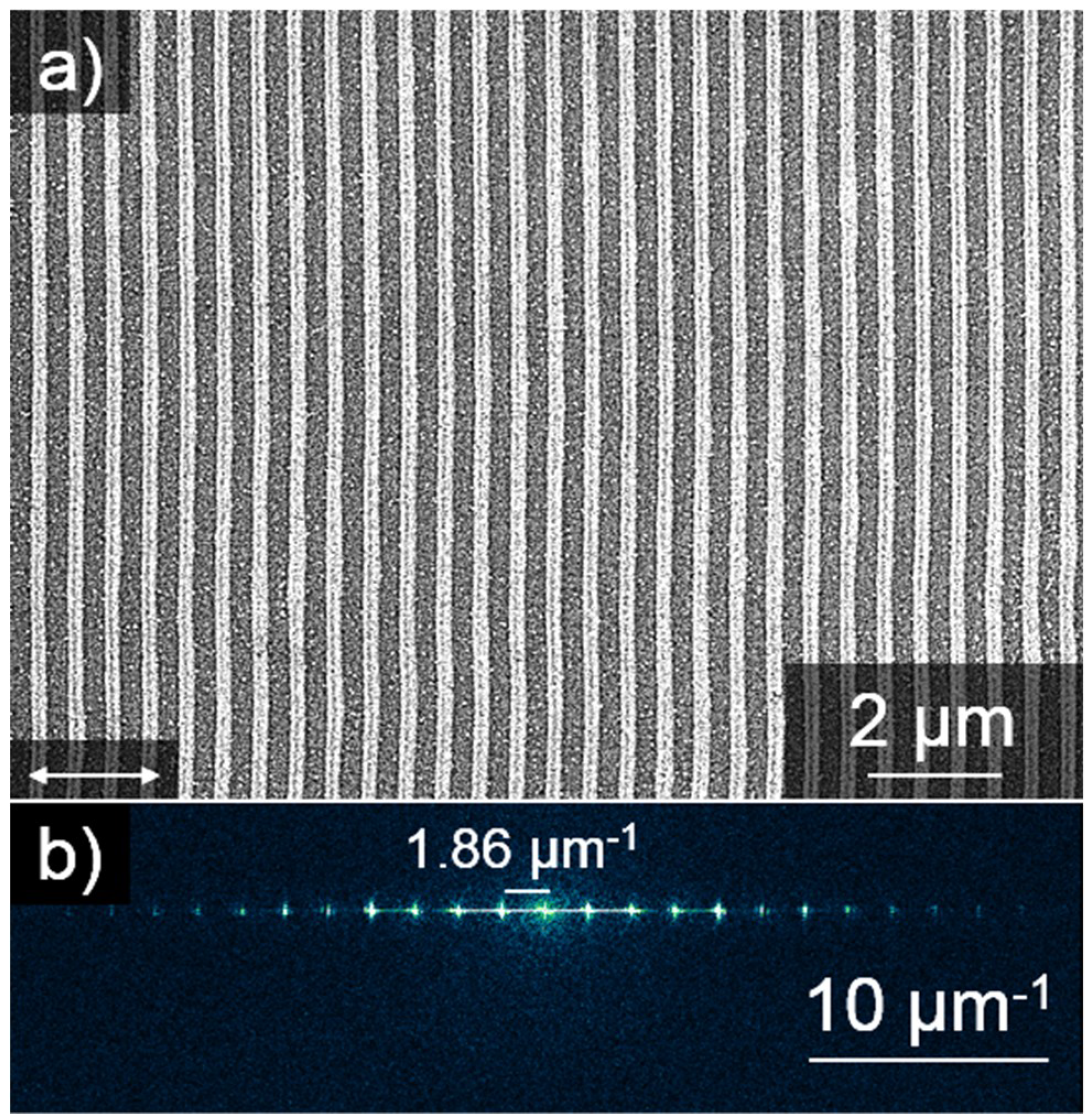
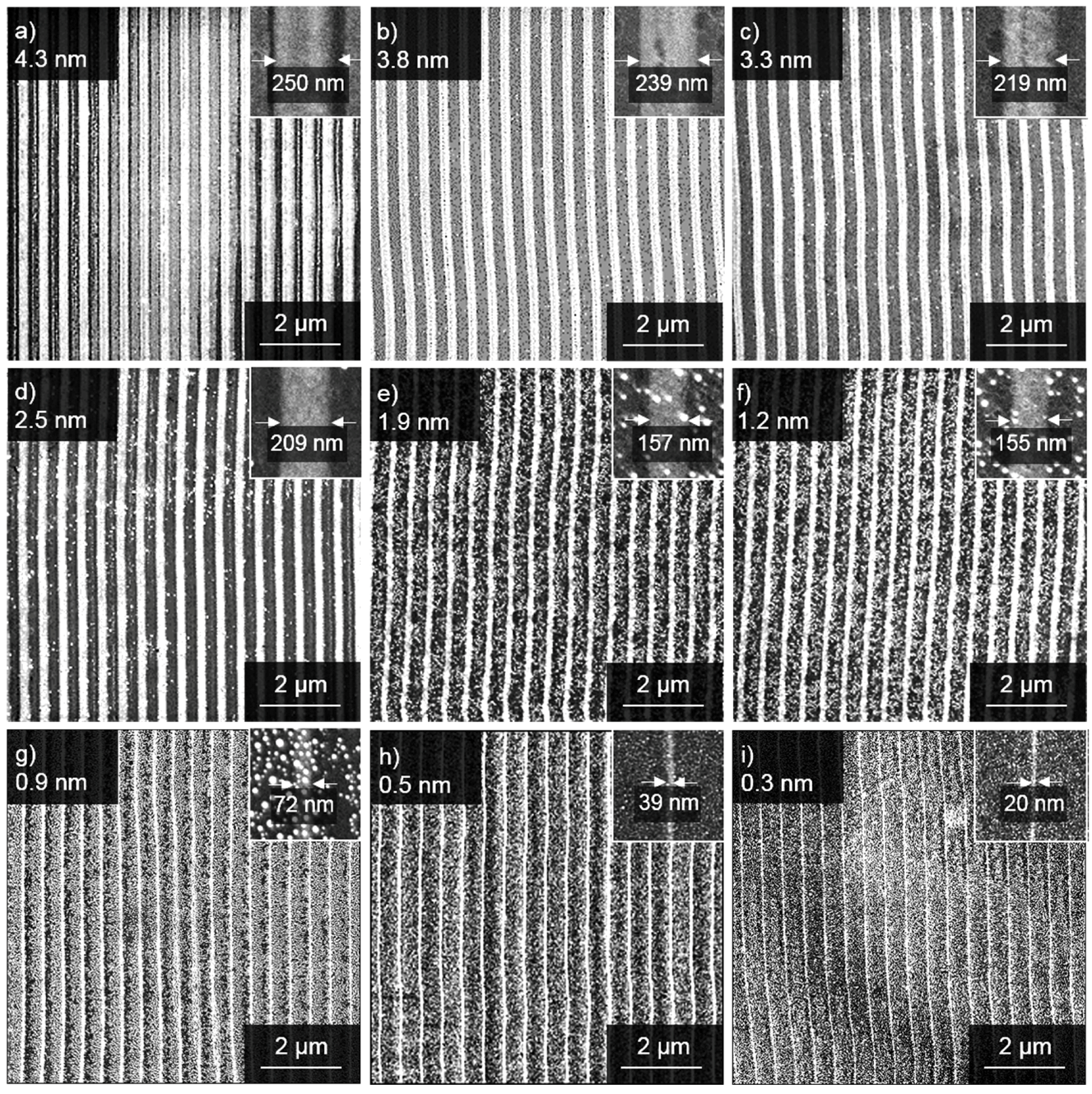
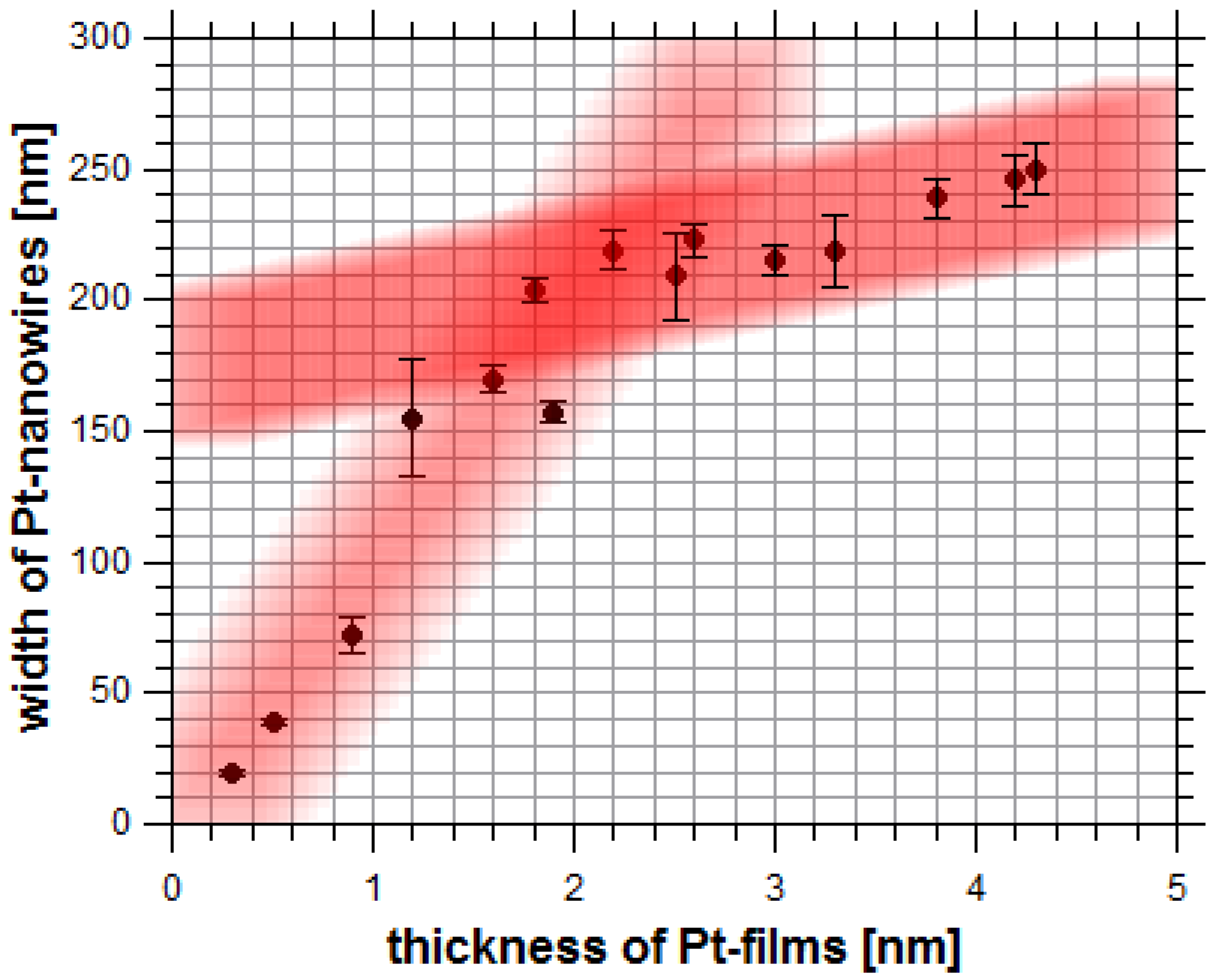
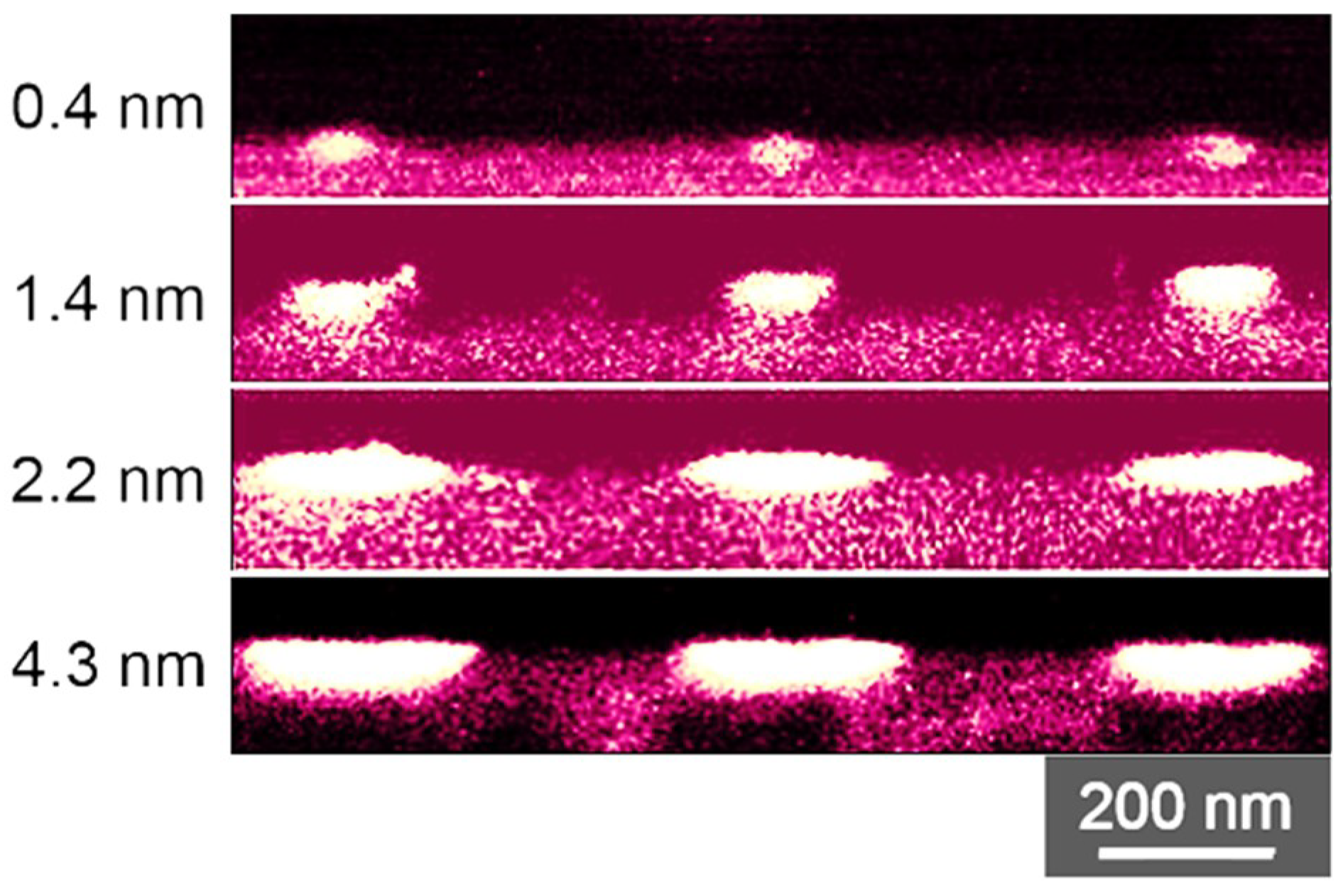
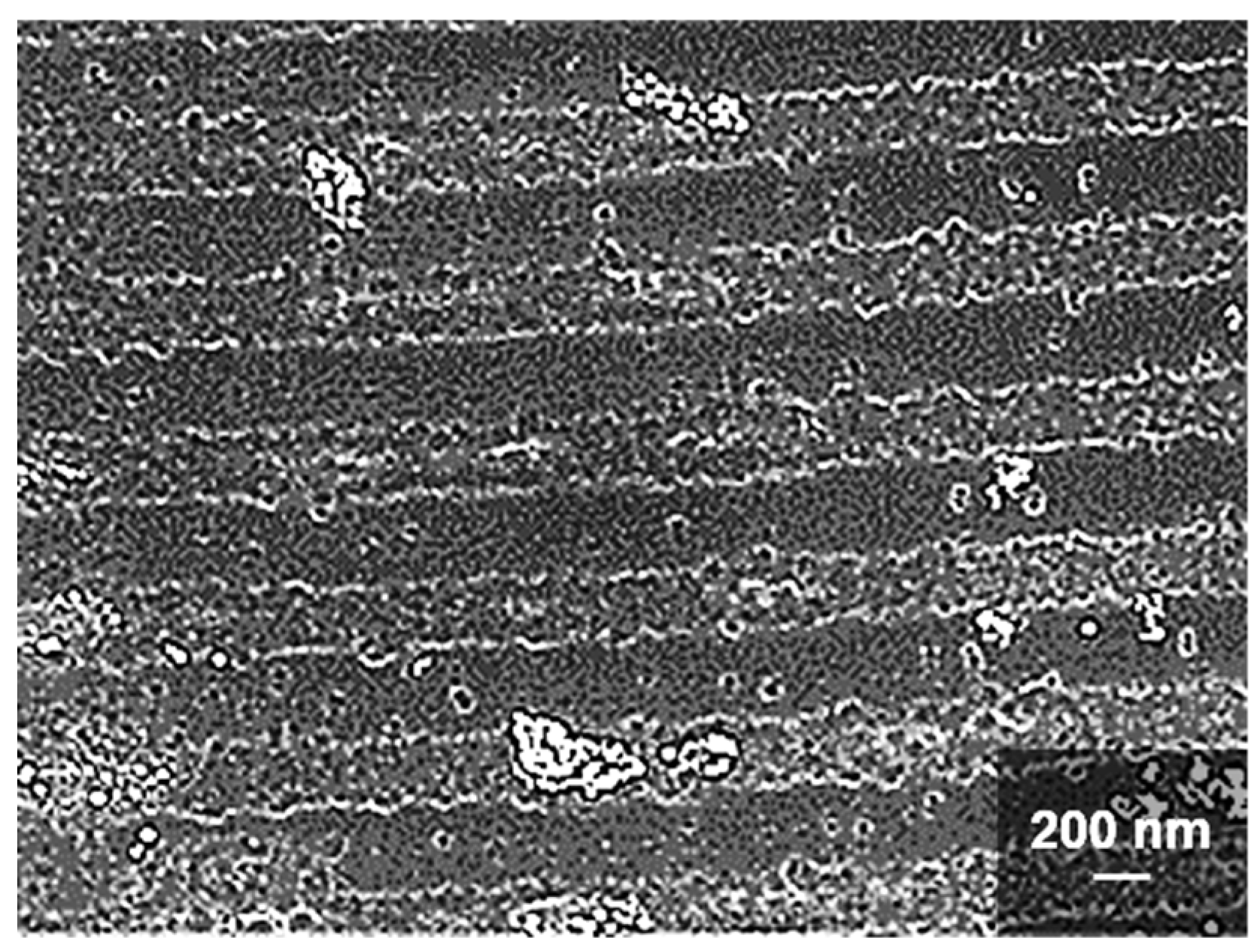

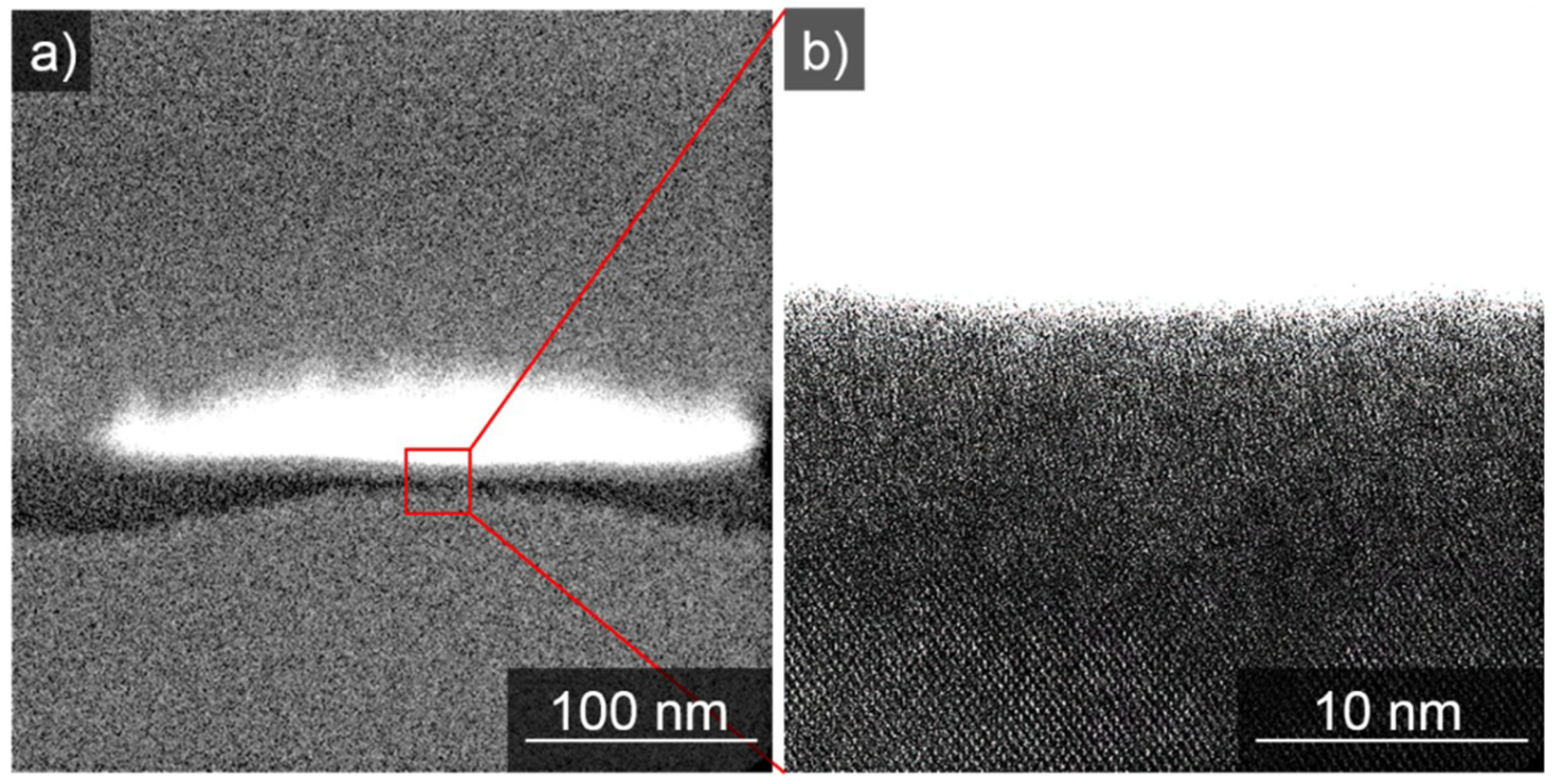

© 2019 by the authors. Licensee MDPI, Basel, Switzerland. This article is an open access article distributed under the terms and conditions of the Creative Commons Attribution (CC BY) license (http://creativecommons.org/licenses/by/4.0/).
Share and Cite
Dasbach, M.; Reinhardt, H.M.; Hampp, N.A. Formation of Highly Ordered Platinum Nanowire Arrays on Silicon via Laser-Induced Self-Organization. Nanomaterials 2019, 9, 1031. https://doi.org/10.3390/nano9071031
Dasbach M, Reinhardt HM, Hampp NA. Formation of Highly Ordered Platinum Nanowire Arrays on Silicon via Laser-Induced Self-Organization. Nanomaterials. 2019; 9(7):1031. https://doi.org/10.3390/nano9071031
Chicago/Turabian StyleDasbach, Michael, Hendrik M. Reinhardt, and Norbert A. Hampp. 2019. "Formation of Highly Ordered Platinum Nanowire Arrays on Silicon via Laser-Induced Self-Organization" Nanomaterials 9, no. 7: 1031. https://doi.org/10.3390/nano9071031
APA StyleDasbach, M., Reinhardt, H. M., & Hampp, N. A. (2019). Formation of Highly Ordered Platinum Nanowire Arrays on Silicon via Laser-Induced Self-Organization. Nanomaterials, 9(7), 1031. https://doi.org/10.3390/nano9071031




